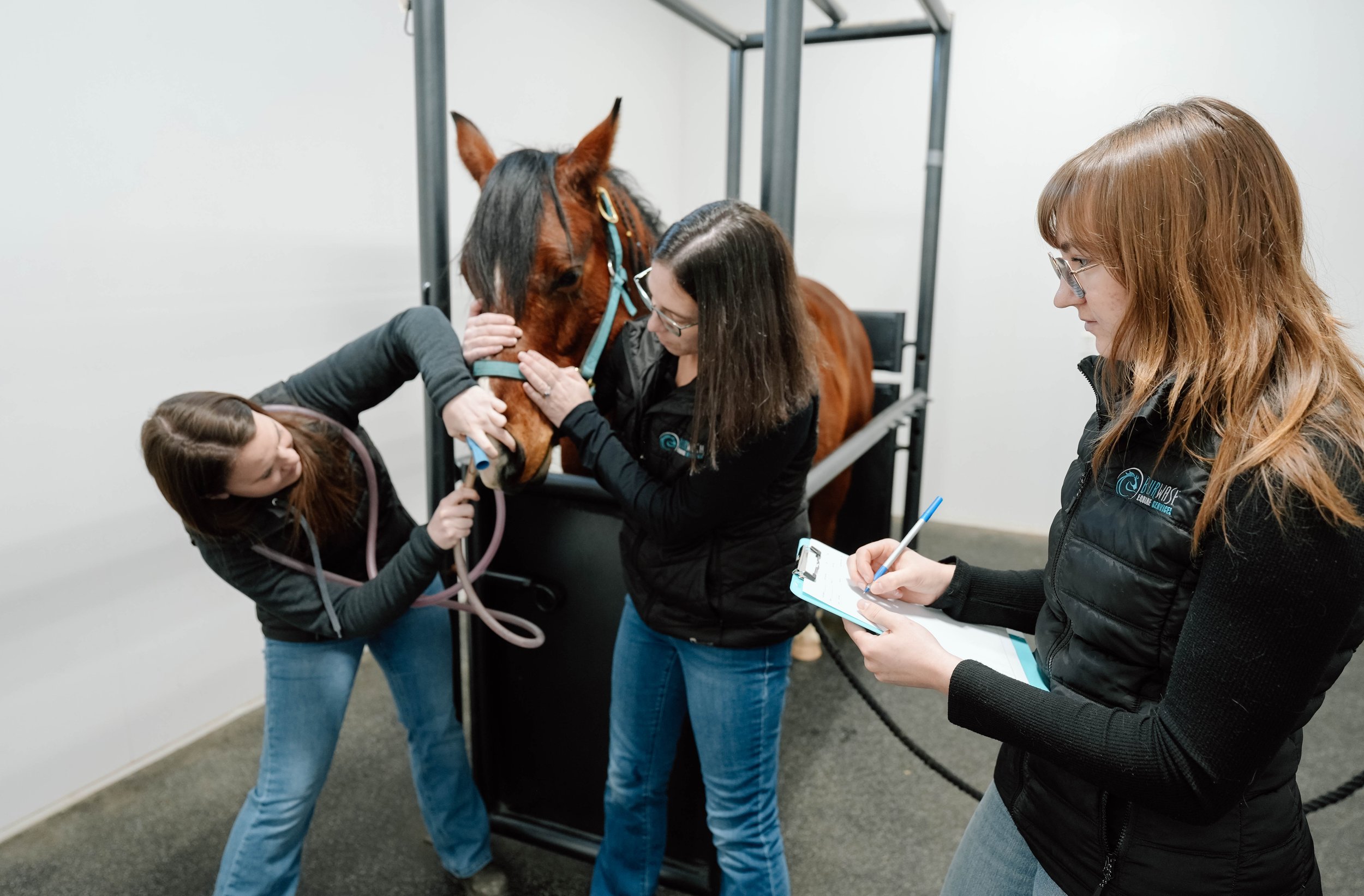
Burwash Equine Services Ltd. offers 24/7 emergency services. In the event of an emergency after office hours please call 403-242-1913. You will reach an answering service (yes, a live person....not a recorded voice with several entry options), who will contact the on-call veterinarian. You will receive a call back from our on-call veterinarian as quickly as possible.
Our veterinary team offers ambulatory emergency services to: Cochrane, Calgary, Springbank, Bragg Creek, Priddis, Millarville, Diamond Valley, Okotoks, High River, Water Valley and Airdrie.
Rehabilitation and return to performance after colic surgery, written by Dr. Crystal Lee for the Canadian Horse Journal.
Click on this link to check out a pdf of the slides from Dr. Alyssa Butters' presentation at the First Aid Seminar on March 29, 2016!
Heel bulb lacerations, even without joint involvement, are a challenge to get to heal primarily because of the amount of motion in the area. Every time the horse takes a step, the wound opens and closes, preventing effective healing. Because of this, the best method of treatment is often to suture the wound and place a cast over the foot to limit movement while the wound is healing.
Brio sustained a very deep laceration to her heel bulb while out on pasture. We examined her as soon as the owner discovered the wound, but it had likely occurred at least a week previously.
Stone came in to Burwash Equine unable to bear any weight at all on his right hind limb. He had sustained a wound on his hock that had been healing well, but had never been lame prior to the morning he arrived. By palpating the hock, doing an ultrasound exam, taking x-rays, and taking a sample of the fluid from the tarsal sheath, we diagnosed an infection of the tarsal sheath
When Luke was referred to Burwash Equine by his regular veterinarian, he was unable to bear any weight on his left front limb. His veterinarian had diagnosed a puncture wound to the sole that had likely occurred several days previously. The following x-ray shows a probe placed in the puncture wound to demonstrate which structures in the foot may have been involved. Although the probe doesn’t extend the entire path of the wound, from this x-ray and taking a sample of fluid from the digital tendon sheath, we suspected infection of both the navicular bursa and the tendon sheath.
Roy sliced the skin off the front of his knee slipping on a rubber mat over the Easter weekend. We injected saline into both his radiocarpal joint and his middle carpal joint to make sure they weren't involved in the wound, and then were able to close the wound with sutures.
If you own horses long enough, sooner or later you are likely to confront a medical emergency. From lacerations to colic to foaling difficulties, there are many emergencies that a horse owner may encounter. You must know how to recognize serious problems and respond promptly, taking appropriate action while awaiting the arrival of your veterinarian.
Preparation is vital when confronted with a medical emergency. No matter the situation you may face, mentally rehearse the steps you will take to avoid letting panic take control. Follow these guidelines from the American Association of Equine Practitioners (AAEP) to help you prepare for an equine emergency:
Equine Emergencies by Dr. Crystal Lee
Getting Back to Better by Dr. Crystal Lee
First Aid Seminar - Part 2
First Aid Seminar - Part 1
Case Study: Heel Bulb Laceration
Case Study: Septic Tarsal Sheath
Case Study: Puncture Would From a Nail in the Foot
Case Study: Carpal Laceration
Be Prepared for an Equine Health Emergency










